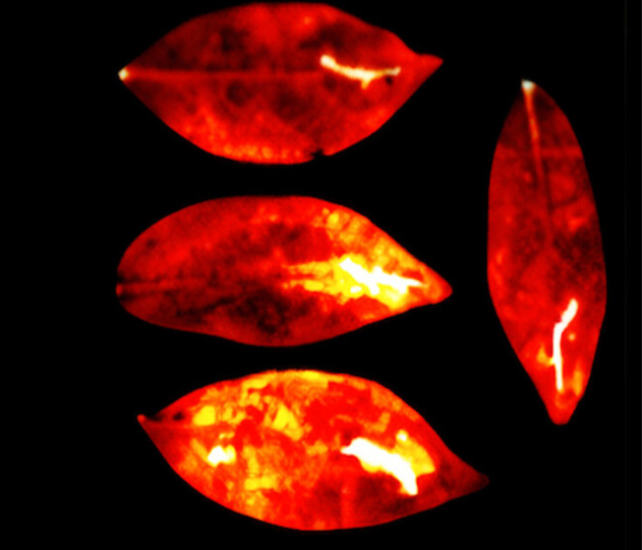Life truly is radiant, according to an experiment conducted by researchers from the University of Calgary and the National Research Council of Canada.
An extraordinary experiment on mice and leaves from two different plant species has uncovered direct physical evidence of an eerie 'biophoton' phenomenon ceasing on death, suggesting all living things – including humans – could literally glow with health, until we don't.
The findings might seem a little fringe at first glance. It's hard not to associate scientific investigations into biological electromagnetic emissions with debunked and paranormal claims of auras and discharges surrounding living organisms.
What's more, even in theory, visible wavelengths of light emitted by biological processes ought to be so faint that it's easily swamped by the intense shine of ambient electromagnetic waves in the environment and radiant heat generated by our metabolism, making it a challenge to accurately track across an entire body.
Still, University of Calgary physicist Vahid Salari and his team have claimed to observe just that – an ultraweak photon emission (UPE) produced by several living animals in strong contrast with their non-living bodies, as well as in a handful of plant leaves.
The science behind biophotons is from a controversial idea itself. A variety of biological processes clearly generate bright displays of light in the form of chemiluminescence. And for decades the spontaneous sputtering of light waves anywhere from 200 to 1,000 nanometers in length has been recorded from less obvious reactions among a wide diversity of living cells, from cow heart tissue to bacterial colonies.
A strong contender for the source of this radiation is the effect of various reactive oxygen species that living cells produce when troubled by stresses such as heat, poisons, pathogens, or lack of nutrients.
Given enough molecules of hydrogen peroxide, for example, materials like fats and proteins can undergo transformations that kick their electrons into high gear and spit out a suitably energetic photon or two as they settle back into place.
Having a means of remotely monitoring the stress of individual tissues in whole human or animal patients, or even among crops or bacterial samples, could provide technicians and medical specialists with a powerful, non-invasive research or diagnostics tool.
To determine whether the process could be scaled from isolated tissues to entire living subjects, the researchers used electron-multiplying charge-coupled device and charge-coupled device cameras to compare the faintest of emissions from whole mice – first alive, then dead.
Four immobilized mice were individually placed in a dark box and imaged for an hour, before being euthanized and imaged for another hour. They were warmed to body temperature even after death, to keep heat from being a variable.
The researchers found they could capture individual photons in the visible band of light popping out of the mouse cells before and after death. The difference in the numbers of these photons was clear, with a significant drop in UPE in the measurement period after they were euthanized.

A process carried out on thale cress (Arabidopsis thaliana) and dwarf umbrella tree (Heptapleurum arboricola) leaves revealed similarly bold results. Stressing the plants with physical injuries and chemical agents provided strong evidence that reactive oxygen species could in fact be behind the soft glow.
"Our results show that the injury parts in all leaves were significantly brighter than the uninjured parts of the leaves during all 16 hours of imaging," the researchers report.

The experiment encourages speculation that the faintest of ethereal glows produced by stressed cells may perhaps one day tell us whether we're in radiant health.
This research was published in The Journal of Physical Chemistry Letters.
